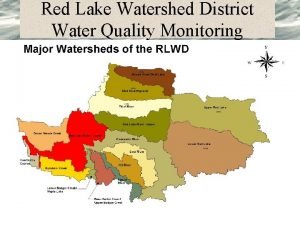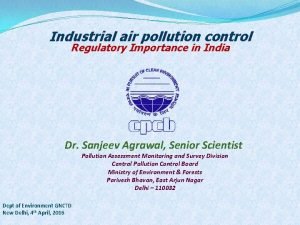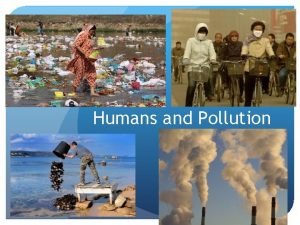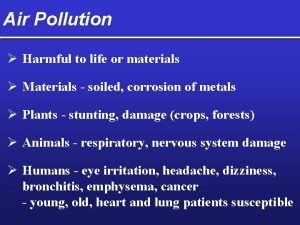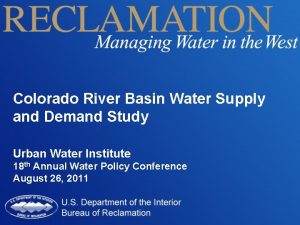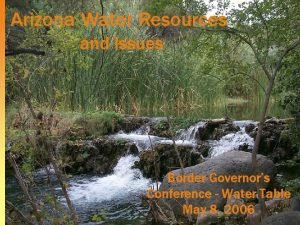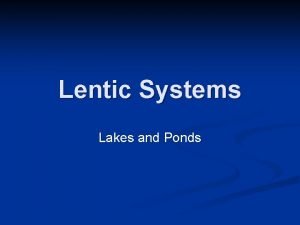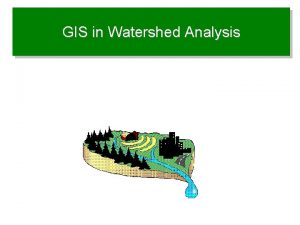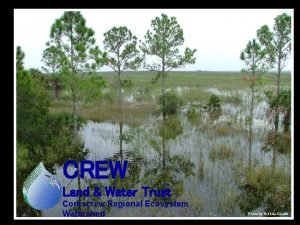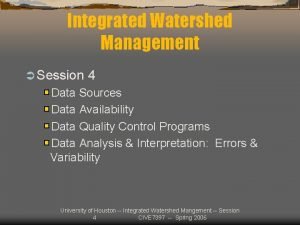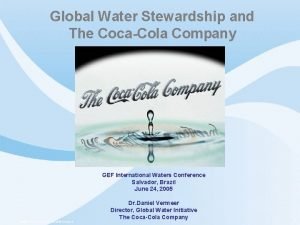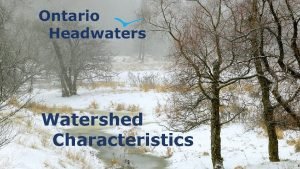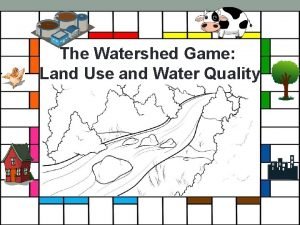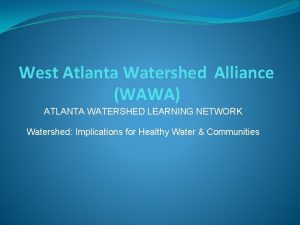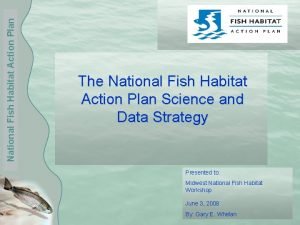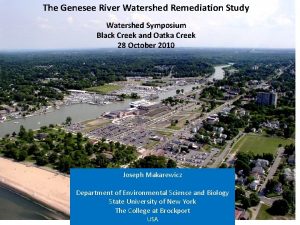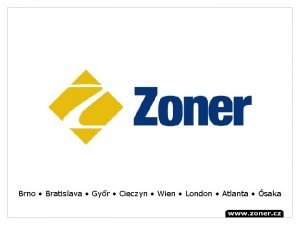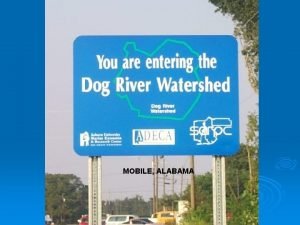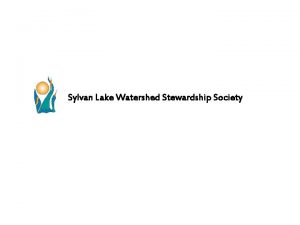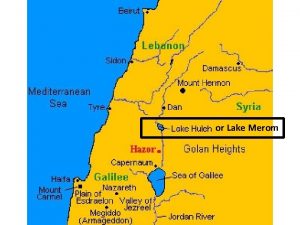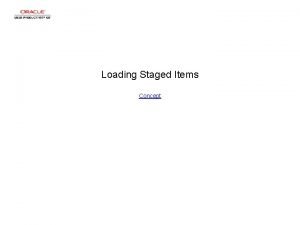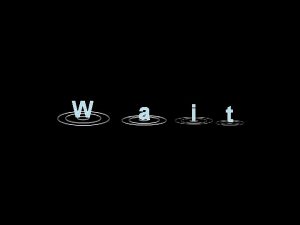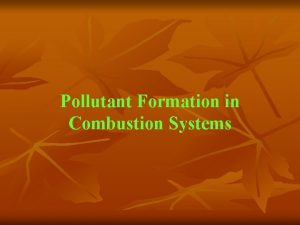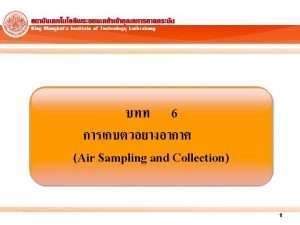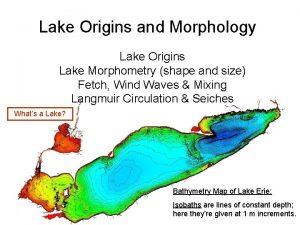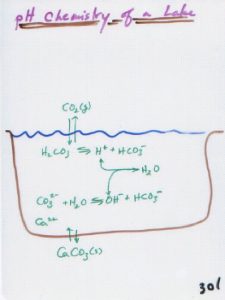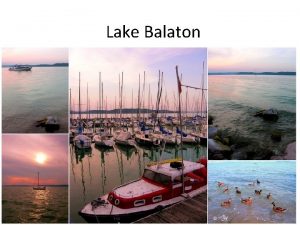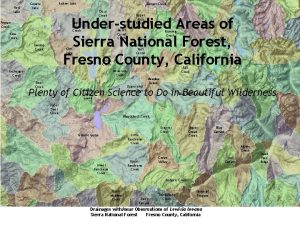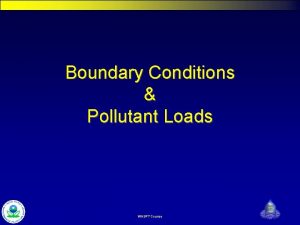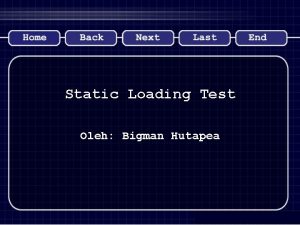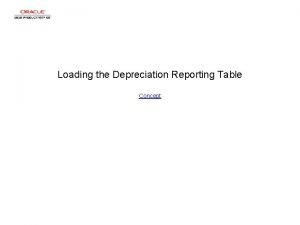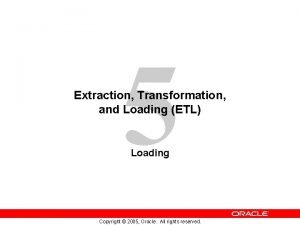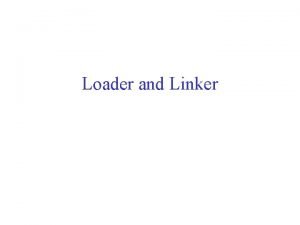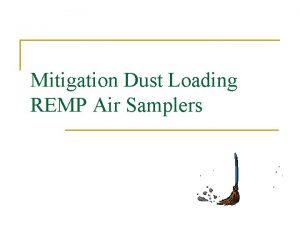Pollutant Loading from Airshed Watershed Sources to Lake

























- Slides: 25

Pollutant Loading from Airshed & Watershed Sources to Lake Tahoe: Influence on Declining Lake Clarity John E. Reuter - University of California, Davis

Presentation Topics Ø Lake Tahoe and overview of impacts Ø Transport of toxics to lake Ø Atmospheric deposition, nutrient budget & nutrient limitation Ø Current research on nutrient and particle sources Ø Linkage to Tahoe TMDL

Introduction to Lake Tahoe and Key Environmental Impacts

Air Pollution - Just One of Multiple Ecosystem Stressors

Features of Lake Tahoe • Subalpine, oligotrophic, low nutrients in soils • 800 km^2 drainage • 500 km^2 lake surface • 499 m max. depth • 650 yr hydraulic residence • 80% land managed by USFS • Urban-wildland interface

Lake Tahoe: A Changing Ecosystem Ø Significant portions are urbanized Ø Increased resident population Ø Millions of tourists Ø Peak VMT >1, 000 miles/day Ø Loss of wetland runoff infiltration Ø Extensive road network Ø Land disturbance - soil erosion Ø Air pollution

Changing Landscape has Lead to Following Lake Issues Ø Loss in transparency Ø Increased algal growth Ø Changes in biodiversity Ø Higher load of nutrients and fine-sediment Ø Wetland/riparian habitat loss Ø Invasion of non-native biota Ø Air quality impacts Ø Appearance of toxics (e. g. PCB, Hg, MTBE) Ì Significant effort on part of state and federal agencies, local government, universities and environmental consultants to address these and other issues

Transport of Toxics to Lake and Incorporation into Biota Air Pollution is Just Not a Local Issue

Regional Transport of Mercury Alan C. Heyvaert et al. (2000)

Transport of Organic Toxics S. Datta, F. Matsumura et al. (1998) Air, water, snow & fish samples taken at Tahoe and nearby lake showed measurable levels of PCBs Ø Low levels of contamination but mass balance suggests: Ø a) atmospheric sources dominate b) out-of-basin transport

Atmospheric Deposition, Nutrient Budget & Nutrient Limitation Influence on Long-term Decline of Lake Clarity

Unraveling Cause(s) for Declining Water Clarity • Nutrients stimulate algae • Fine-sediments directly reduces clarity (1 -20 µm) • Progressive accumulation leads to long-term decline • Management strategy - P, N, sediment control • Evidence for possible recovery • TMDL, EIP & other plans are addressing load reduction

“Initial” Lake Tahoe Nutrient Budget Jassby et al. (1994), Reuter et al. (2000) Total-N Total-P Atmospheric Deposition 234 (59%) 12. 4 (28%) Stream loading 82 (20%) 13. 3 (31%) Direct runoff 23 (6%) 12. 3 (28%) Groundwater 60 (15%) 4 (9%) Shore erosion 1 (<1%) 1. 6 (4%) Total Ø Ø 400 43. 6 Strongly suggests importance of AD for nutrients Little data on inorganic particle deposition (soils) Size and low nutrient condition of Tahoe increases its importance More work underway to improve initial estimate (ARB, DRI, UCD)

Change in Algal Response to Nutrients Goldman et al. (1993), Jassby et al. (1994) Ø Long-term shift from N&P co -limitation to consistent P limitation Ø Data strongly suggests that AD, with high N: P ratio is associated with this shift Ø Fundamental change in lake ecosystem function Ø AD-N very important in coastal oceans Ø Another example of airshedwatershed interaction

Current Research on Nutrient and Particle Sources ‘Not So Elementary My Dear Watson’

Current Research is a Work in Progress Ø Sources of N, P and fine-sediment - local, regional and global Ø In-basin or out-of-basin: a key management question Ø The Lake Tahoe Air Quality Research Scoping Document (Cliff et al. 2000) identified need to look at: • Fires (controlled/wild) • Road dust • Vehicle exhaust • Residential heating • Upwind emissions Ø LTADS -> CARB and universities are addressing source

LTAM Predicts Smoke PM 2. 5 for Wildfire & Prescribed Burns S. Cliff & T. Cahill (2002) Ø PM 2. 5 (µg/m 3) based on 3 fire scenarios: a) Historical wildfire (12 -16 ha) b) Hypothetical prescribed burn, 50 -ha, Ward Valley c) Same as b, with 100 -ha prescribed burn Ø Significant implications for visibility and source for direct deposition

Aircraft Measurements of N & P in Forest Fire Smoke in and Around Tahoe Basin Q. Zhang et al. (2002) Top of bar = Particulate N Bottom of bar = Gaseous N Ø TN - 5 -6 x higher in forest fire smoke than clean Tahoe air, with a greater contribution by ON Ø P - 10 x higher in smoke plume; much less P in slightly smokey air Ø Bulk deposition measured at Tahoe 5 -10 times during smoke period Ø Smoke can be nutrient source, but depends on transport and deposition

Aerosols at South Lake Tahoe: Evidence for the Role of Road Dust Cahill et al. (2003) Continuous monitoring of 8 size modes (0. 09 -35 µm) in summer and winter with Drum Sampler at site downwind of Highway 50. Analysis for 32 elements done at 3 hr intervals. Ø Conclusions: Ø • Hwy 50 major source of coarse particles (2. 5 -35 µm) • Particles >PM 10 contain most P • Previous AQ studies did not focus on larger cuts • Hwy 50 also source of fine particles (0. 09 -0. 26 µm) from diesels, smoking cars and fine ground road soil • Transport out over lake occurs each night • Data suggest that winter P is strong associated with road sanding/drying conditions while in summer values are more consistent day-to-day suggesting road dust from highway and near-highway soils • Contribution to whole-lake P budget now being evaluated

Linkage to Tahoe TMDL Total Daily Maximum Load Best Understood as Water Clarity Restoration Plan

Elements of a TMDL v Problem Statement v Numeric Target Source Analysis v Linkage Analysis v Load Allocations v Margin of Safety v Implementation Plan v

Conceptual Load Reduction Model % Sediment Reduction educt 90 R n 100 e g o 80 % Nitr 70 60 40 50 20 30 10 0 0 10 20 30 40 50 60 70 80 90 100 • Informed by Clarity model • Multiple potential solutions 0 10 20 % Pho 30 40 50 60 sphor us Re 70 80 90 100 ductio n Parameters are for illusrative purposes only Final Secchi Depth (m) 20 - 25………Red 25. 5 -28……. Yellow 28. 5 -32. 5…. . Blue 33 & above. . Purple

Load Reduction Matrix

Example Load Reduction Alternatives A Urban (34%): U-2, U-6, U-14, U-26, U-56, U-78 Atmospheric (12 %): A-3, A-7, A 19, A 43 Stream Channels (20%): ST-10, ST-34, ST-43 Ground Water (12%): GW-2, GW-4, GW-18 Forested Areas (22%): FA-11, FA-23, FA-25 TOTAL REDUCTION = 15, 000 kg tbd/yr B Urban (20%) Atmospheric (25%) Stream Channels (25%) Ground Water (15%) Forested Areas (15%) TOTAL REDUCTION = 15, 000 kg tbd/yr C Urban (20%) Atmospheric (15%) Stream Channels (30%) Ground Water (25%) Forested Area (15%) TOTAL REDUCTION = 15, 000 kg tbd/yr Parameters are for illustrative purposes only

Conclusion Science-Based Decision Making Stakeholder Driven
 Primary pollutant vs secondary pollutant
Primary pollutant vs secondary pollutant Static vs dynamic class loading
Static vs dynamic class loading Perbedaan granit double loading dan single loading
Perbedaan granit double loading dan single loading Red lake watershed district
Red lake watershed district Pollutant
Pollutant Slogan on air pollution
Slogan on air pollution Primary and secondary pollutants
Primary and secondary pollutants What is secondary pollutant
What is secondary pollutant Lake powell and lake mead
Lake powell and lake mead Lake powell and lake mead
Lake powell and lake mead Lentic system
Lentic system Print sources of information
Print sources of information Important of water resources
Important of water resources Gis watershed analysis
Gis watershed analysis Crew land and water trust
Crew land and water trust Tukwila
Tukwila Integrated watershed management
Integrated watershed management Coca cola watershed
Coca cola watershed Watershed characteristics
Watershed characteristics The watershed game
The watershed game West atlanta watershed alliance
West atlanta watershed alliance Maumee watershed district
Maumee watershed district Local watershed definition
Local watershed definition Genesee river watershed
Genesee river watershed Atlanta watershed management
Atlanta watershed management The dog river watershed covers
The dog river watershed covers



